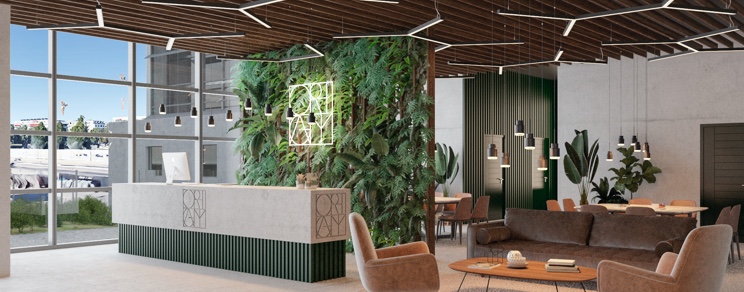
“Each company will have to find its own formula for fitting out its office premises following Covid”
We already mentioned the subject a few weeks ago (see: Office space, what model for tomorrow?), the organization of office work is undergoing a major change. What lessons can be learned from the crisis? How to welcome users again? Martin Pongratz, Director of Workplace Strategies for CBRE, provides some prospective answers.
Can we now assess the effects of the crisis and the pandemic on the way we invest in work and office spaces?
The pandemic opened a door but the change was very, very fast. A kind of wall around teleworking and staying home to work was broken down. A practice that wasn’t always well regarded. Some of that new culture will stay, that’s for sure, but the question now is to what extent? For what social project? What is realistic? Useful and not so useful? How will each company succeed in becoming attractive to its employees? Each company will have to find its own formula.
Some have predicted the end of office buildings…
In the euphoria of the first few months, when services were running remotely, some people tended to predict the end of work at the office and the collapse of the office real estate market. This was obviously exaggerated. It’s still interesting to have a centralized office to attract people, but maybe not in exactly the same way as before. The companies that think they are operating the same way are in the minority. By our estimate, they represent about 20% of organizations. 50% are hesitant, aware that there will be changes but still in the process of internal assessment, reflection and analysis. The remaining 30% have already initiated clear policies and set up other trajectories. This new way of working is what we call the hybrid office.
How could we define it ?
For the moment, it is still very virtual but it will soon be virtual and real at the same time. For example, how to make remote and face-to-face participants coexist in the same meeting? We will have to find solutions, be flexible and review the distribution of tasks that were previously done only in the office. This will depend on the tasks, the personalities and the personal framework of each person. For example, a young couple with two children may find it difficult to work from home during the school vacations and will therefore seek to come to the office. For others it will be exactly the opposite. If we were to project a rough vision, it is likely that concentrated, individual and routine work will be done at home. Conversely, the office will be the place for exchanges and interactions.
For companies, this means rethinking the way they invest and design their spaces now?
Yes, it will be a question of overall strategy. Tomorrow’s offices can no longer be defined simply by density and square meters figures. The system will become more subtle, more “grey”, there will be new calculations on the intensity of use of offices, their energy consumption, the efficiency of each space. For example, if a six-person office is regularly used by only two or three people at a time, there will undoubtedly be savings in space. On the other hand, it will be necessary to increase the number and size of meeting rooms, to foresee areas where one can be noisy and have a teleconference with a colleague who has stayed at home. What is taking shape is a reduction in the size of the current surfaces allowing the financing of the creation of more modern infrastructures using the virtual and focusing on the services. This is a real redistribution of organizations.

